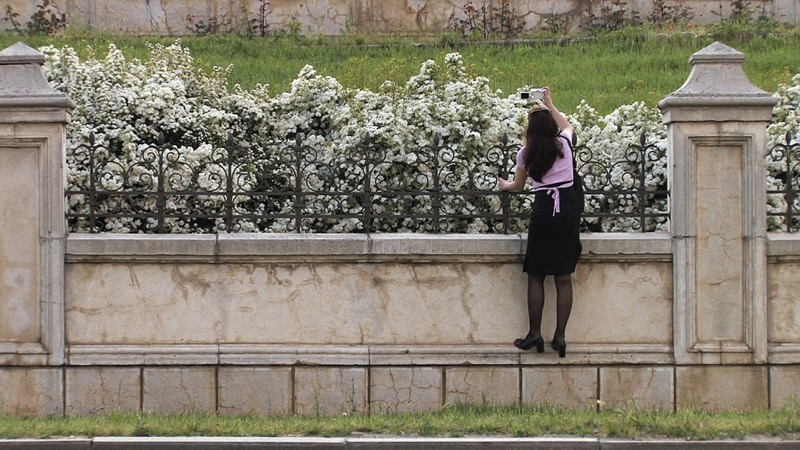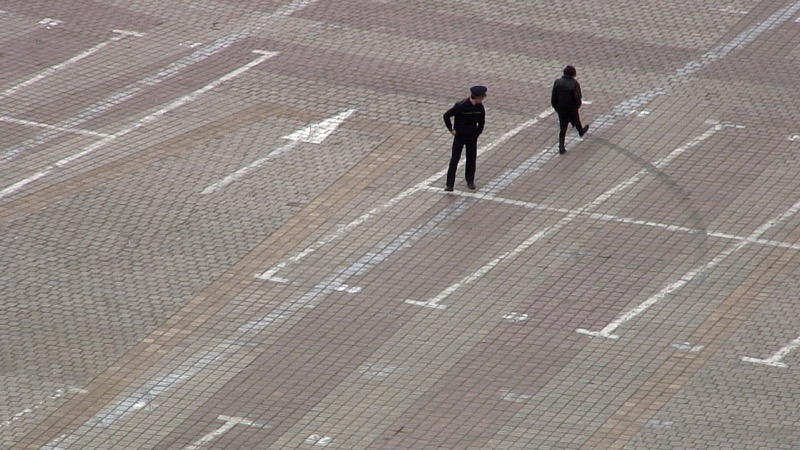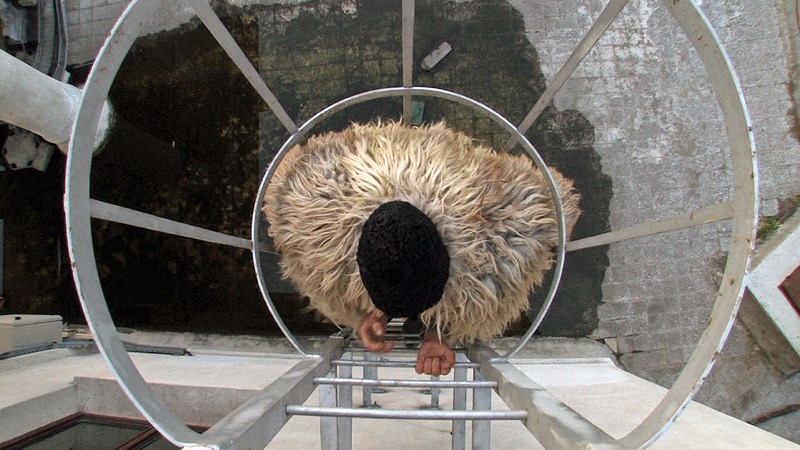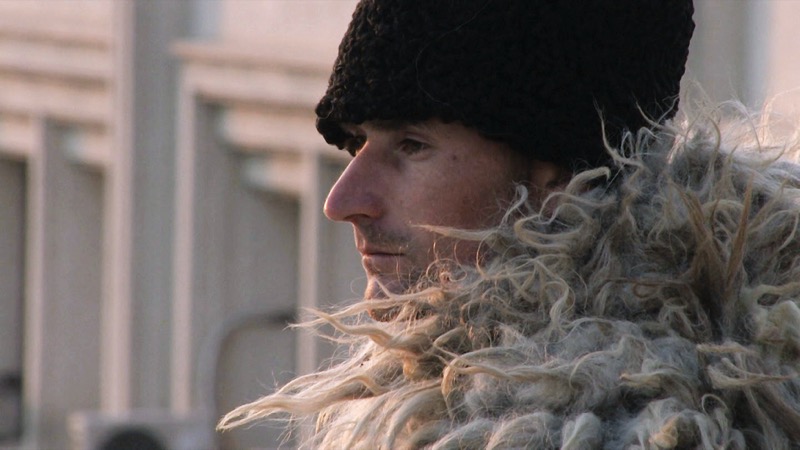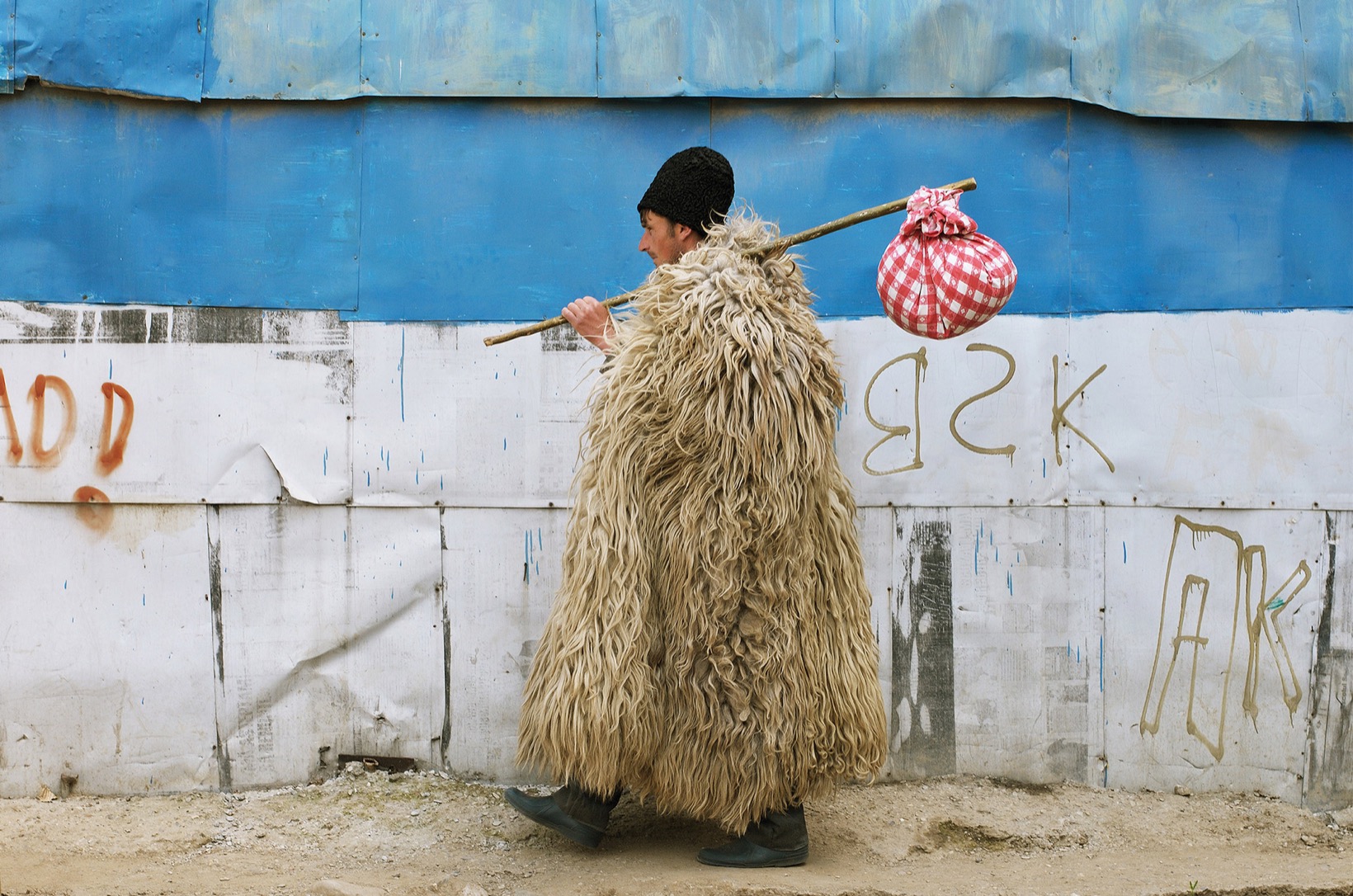
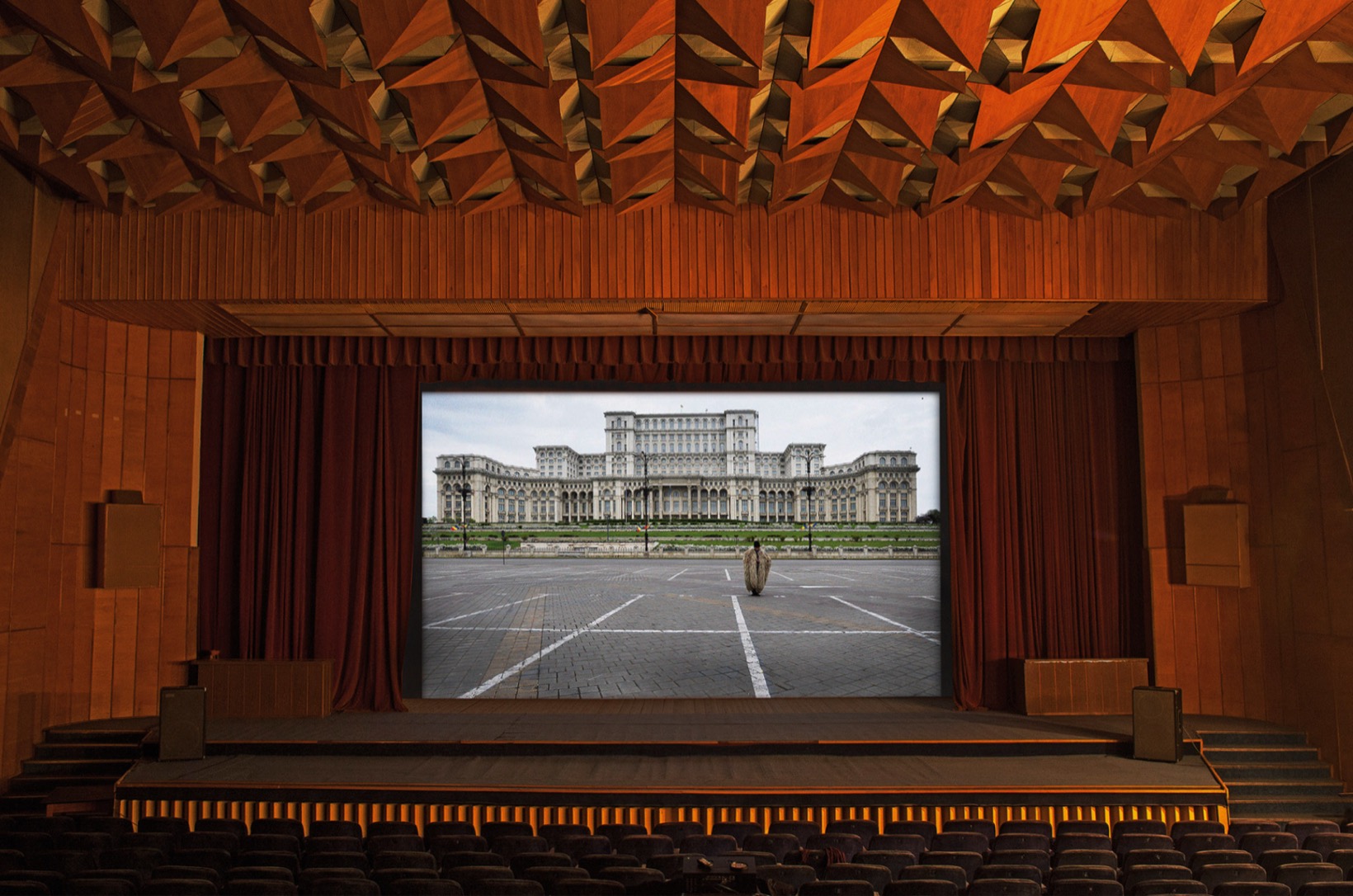

City of Bucur
Shortfilm, 2011, 21 min. 48 sec., 16:9
A Film about a Non-existent Film
City of Bucur is a film about the foundation myth of Bucharest set in the present.
Next to the hill which the legendary Bucur the Shepherd chose to settle down on,
the People’s Palace now stands; the architectural embodiment of Ceausescu’s megalomaniac
dictatorship and today the seat of the Romanian Parliament. In the form of a “making of”,
the film tells the story of a short movie production about the foundation myth in this historic location.
The shepherd, the film director, and the flock of sheep all begin their parallel journeys towards the location –
the place where the legend originated. (...)
Roads to (Hi)Stories - On Aurelia Mihai’s Video Art
by REINHARD SPIELER
“Many of Aurelia Mihai’s video works begin with someone taking to the road. In fact, the road is the focus of the storyline, both its subject and the golden thread running through the plot. Three works serve as examples of this, which all feature shepherds and their sheep; they can be viewed as a trilogy. In City of Bucur (2010), a film director, her leading actor, and a herd of sheep all take to the road at the same time. In ... And the Moldavian One (2008) two groups of shepherds are separated by a river that is a national border but they still take similar paths. In Transhumanta (2007), a two-channel video installation where the road or way is implicit in its title (from the Latin trans “across” and humus “ground”; in Romanian “migration of flocks of sheep”), a shepherd sets out with his herd from the country for the city and ultimately arrives at a museum. (...)
City of Bucur depicts itself, so to speak: its subject is a film about the mythical founding of Bucharest by the shepherd Bucur, who allegedly established the first settlement at the place where Ceauşescu’s megalomaniac palace stands today. Aurelia Mihai’s video work presents a film director’s attempt to reconstruct this founding myth, whereby she approaches it from very different directions. The director in the film approaches history from the modern world and travels by plane. Her arrival coincides with that of her leading actor, who not only plays the shepherd Bucur but is one himself. With his sheepskin coat he seems to come from another world — and he approaches the capital in a horse-drawn cart over dusty roads before boarding the subway at the “heroes of the revolution” station.
The sheep required for the shooting are transported from their home environment by truck; their method of transport — in an artful crosscut to the gaze out of the window of the train — arouses associations with a trip to the slaughter- house. A road and an association that in view of the destination — Ceauşescu’s palace — seem all too realistic in terms of history. Thus three roads meet at the square in front of the gigantomaniac dictator’s monument and lead into a joint plot. A suspicious police officer, who regards even the smallest thing that is out of the ordinary as a potentially punishable offense, underscores the ominous memories of the era of dictatorship. The palace becomes a metaphor of itself, the symbol of a disconnected history completely alienated from its own myth of origin, which in its absoluteness has blown itself up to a magnitude that is domineering, boundless, and terrifying.
Although the reign of terror had long been over when the film was shot in 2009 / 2010, Aurelia Mihai demonstrates that approaching history continues to be impossible: at the time, the administration in the form of the Permanent Office of the chamber of deputies of the Parliament of Romania, which, exactly as before, manifests the dictatorship in the image of the palace, refused permission to shoot the film. In a mixture of exorbitant demands for money, which follows the logic of unfettered capitalism, and political despotism, an anonymous administration refused to issue a permit, and in doing so prevented engaging with the country’s own past and its own founding myth.” (...)
